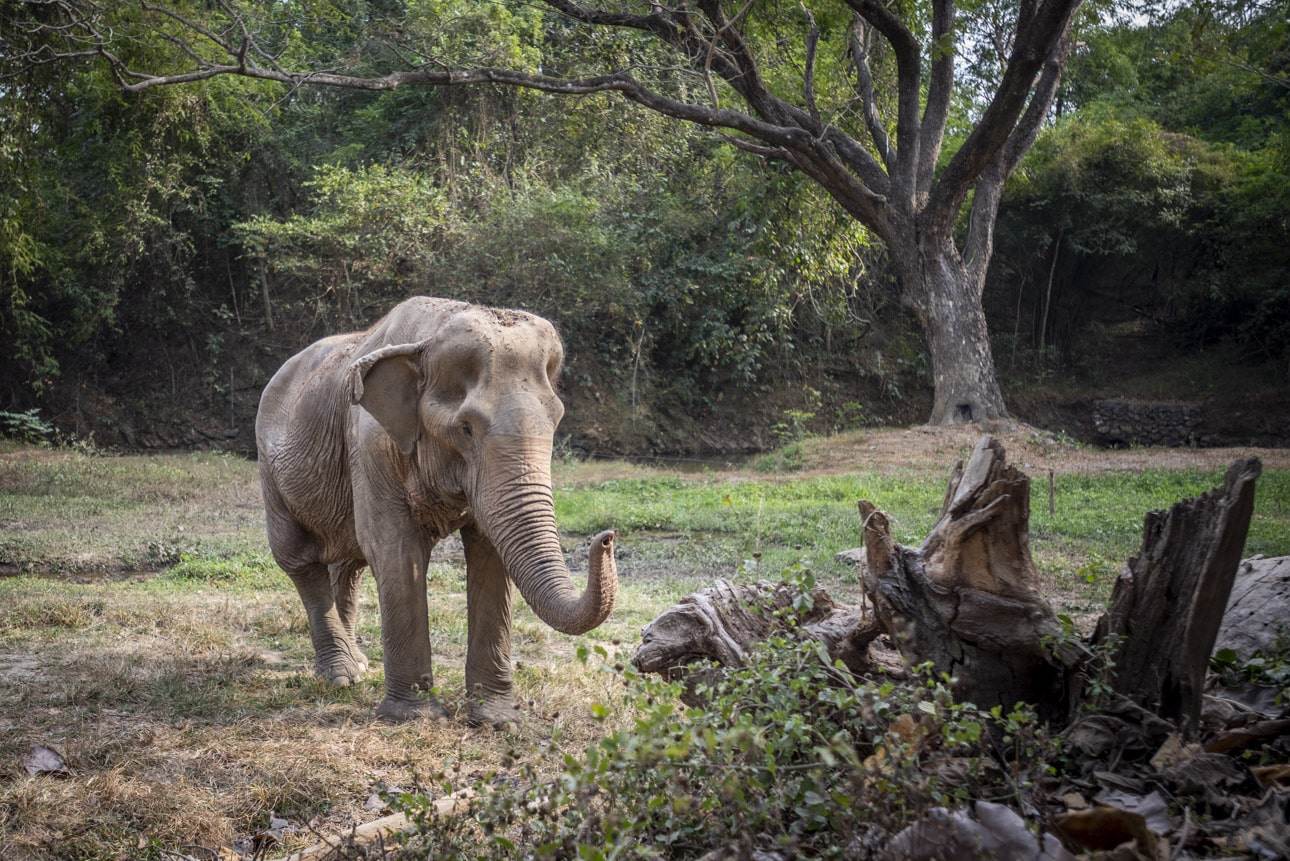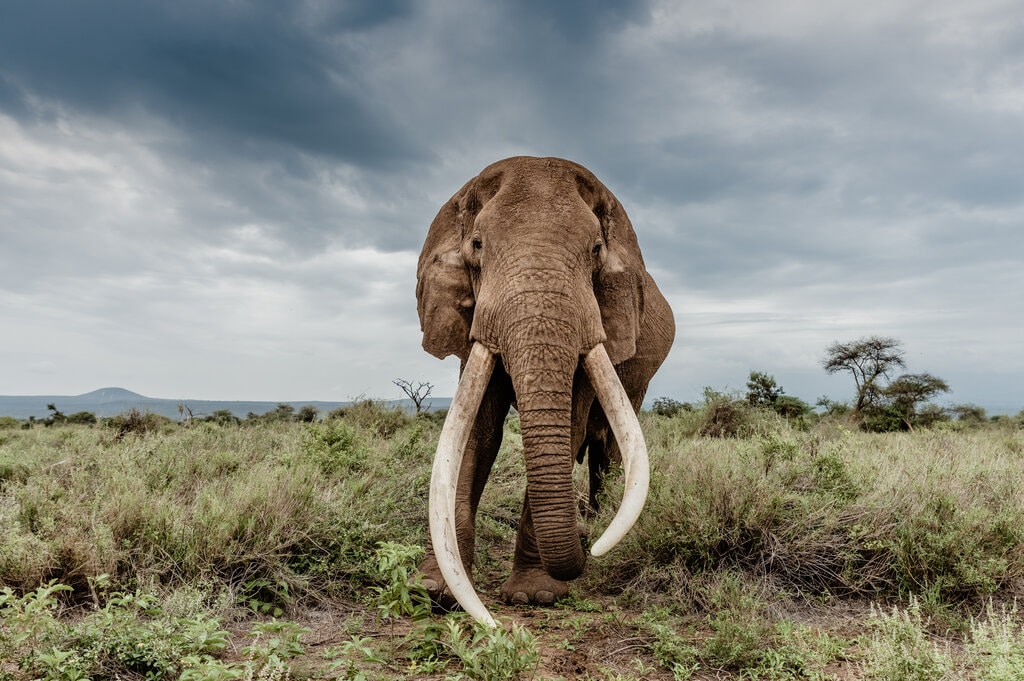Elephants play an important role in their ecosystems and contribute to many areas of tourism and community income. UnfortunatelyWith only 40,000-50,000 specimens left in the wild, this species is considered endangered. To celebrate World Elephant Day 2024, an international day dedicated to the conservation and protection of this wonderful animal, here are 12 facts about elephants you may not know.
—
12 facts about elephants you may not know
1. Elephants are the largest land animals in the world
As the largest land mammal in the world, an average male elephant can grow up to three meters tall and weigh up to six tons. Elephants also have big brains – they weigh about 4-6 kg, making them the largest land mammals. Animals living in the wild can live for 60-70 years.
2. African elephants and Asian elephants are the two main species
Aside from their geographical distribution, African elephants are significantly larger and have larger ears that are shaped like the African continent. Asian elephants, on the other hand, are smaller and have rounder ears. The two species also have different trunks: while African elephants have two recognizable spikes at the tip of their trunks, Asian elephants have only one.
Recent estimates suggest that About 415,428 African elephants still live in the wildHalf of which are native to southern Africa in Botswana and Namibia, while the Asian variant has dropped to less than 30,000 individuals.
3. Asian elephants are endangered
The Asian elephant is currently listed as an endangered species on the International Union for Conservation of Nature (IUCN) Red List, and its population continues to decline daily. Some estimates suggest that the population has declined by 50% in the last 75 years and that there may be as few as 20,000 Asian elephants left in the wild.
They are found in the forest areas of India and throughout Southeast Asia, including Myanmar, Thailand, Cambodia and Laos. About a third of Asian elephants currently live in captivity and many of them are forced into wildlife tourism.
4. Elephants communicate with vibrations through their feet
Here’s one of the most interesting facts about elephants: they can communicate with their feet. Elephants can communicate in many ways. They can attract each other through trumpet calls – usually when greeting family members -, use body language, and use typical senses like touch and smell. However, one of the most unique methods of communication elephants use is seismic signals, where they create vibrations in the ground so that other elephants can sense and absorb these signals through their feet and bones. The communication channel can work over incredibly long distances and speeds.

5. Elephant families are matriarchal
The matriarch of an elephant unit is typically the oldest and largest adult female member of the familyand they are the ones who lead the herd as they travel long distances in search of food and water. The matriarch is also responsible for stability and conflict resolution. However, members of a family unit have also often demonstrated exceptional teamwork when it comes to defending the group, foraging for food, and sharing responsibility for caring for a young calf.
6. Elephant trunks function as hands
An elephant’s trunk is more than just a nose for smelling and breathing. It also functions like a long arm, allowing it to grab food and other things, dig in soil and tree trunks, and even play. Elephants also rely on their trunks to drink water. They can pour up to 12 liters of water into their mouths. They enjoy a refreshing shower by sucking up water and splashing it over their bodies with the handy trunk. There are about 100,000 different muscles in the trunk alone, and the “fingers” or spines at the end help with picking up small objects.
You might also like: Poaching of rhinos and elephants in Africa continues to decline

7. Elephant tusks are actually their teeth
Elephant tusks are actually enlarged incisor teeth that first appear at around two years of age. These tusks serve several important functions for elephants. They are used for digging to access food and water sources, as well as for stripping the bark off trees. For male elephants, the tusks are especially important – they tend to be larger and are used in fights to gain dominance within the herd.
8. Elephants are vegetarians
Elephants are herbivores whose diet consists entirely of plants. Despite being the largest land mammal in the world, their entire diet consists of roots, grasses, fruits, and bark. However, it is the sheer volume of food they consume that gives the animals their enormous size. An adult elephant can eat up to 300 pounds of food in a single day.
9. Elephants have incredibly thick skin
Elephants’ thick coats don’t mean they don’t get excited easily, but rather that the animals physically have very thick skin that protects them from the brutal heat and sun. The skin is also extremely dry and the numerous folds and wrinkles can collect and retain moisture when elephants bathe in water and mud.
10. Elephants are highly intelligent creatures
Elephants are considered to be one of the most intelligent animals in the world, comparable to great apes and dolphins. They have demonstrated the ability to make and use tools with their trunks, experience complex emotions such as compassion and grief, and have shown signs of self-awareness when held up to a mirror.
11. Poaching of elephants for ivory has wiped out 90% of the elephant population in the last century
One of the most unfortunate facts about elephants is their connection to the ivory trade. Ivory, which is found in elephant tusks, has been an incredibly lucrative industry for centuries and is often seen as a status symbol. Due to massive illegal poaching in the 1970s and 1980s to meet the demand for ivory, particularly in Asia, around 90% of Africa’s elephant population was wiped out in the last century. Although many countries have now banned the ivory trade, more than 20,000 elephants are still killed each year in countries such as China and Japan to meet the ongoing demand.

12. Conflicts between humans and elephants are increasing
Due to growing population densities and the spread of agriculture, especially in countries in Africa, the overlap between human settlements and wildlife habitats has fuelled conflict. From elephants raiding the crops of local farms, which are often the only source of income for many people, to the degradation of natural habitats due to land development, protecting elephants and their ecosystems is urgently needed.
Featured image by EO Photographer: William Fortescue
You might also be interested in: Everything you need to know about the endangered Asian elephant
How can I contribute to a more sustainable planet?
- 🗳️ Vote for climate protection: Exercise your democratic rights by supporting candidates and policies that prioritize climate action and environmental protection. Stay up to date with Earth.Org’s election coverage.
- 👣 Reduce your carbon footprint: Make conscious choices to reduce your carbon footprint. Choose renewable energy sources, save energy at home, use public transportation or carpool, and adopt sustainable practices like recycling and composting.
- 💰 Support environmental organizations: Join forces with organizations like Earth.Org and its NGO partners that are dedicated to educating the public about environmental problems and solutions, supporting conservation efforts, holding those responsible accountable, and advocating for effective environmental solutions. Your support can amplify their efforts and create positive change.
- 🌱 Adopt sustainable habits: Make sustainable choices in your everyday life. Reduce single-use plastic, choose eco-friendly products, prefer a plant-based diet and reduce meat consumption, and choose sustainable fashion and transportation. Small changes can have a big impact.
- 💬 Be vocal, get involved and educate others: Raise awareness of the climate crisis and show the importance of protecting the environment. Join the conversation, share information and inspire others to take action. Together we can create a global movement for a sustainable future.
- 🪧 Support climate activists: Show your support for activists on the front lines of fighting climate change. Join peaceful protests, rallies and marches, or participate in online campaigns to raise awareness and demand policy change. By amplifying their voices, you are helping to build a stronger movement for climate justice and a sustainable future.
For further practical steps, please see our “What can I do?” page.
This story is funded by readers like you
Our nonprofit newsroom provides free climate reporting and advertising. Your one-time or monthly donations play a critical role in supporting our work, expanding our reach and maintaining our editorial independence.
About EO | Mission statement | Impact and reach | Write for us

